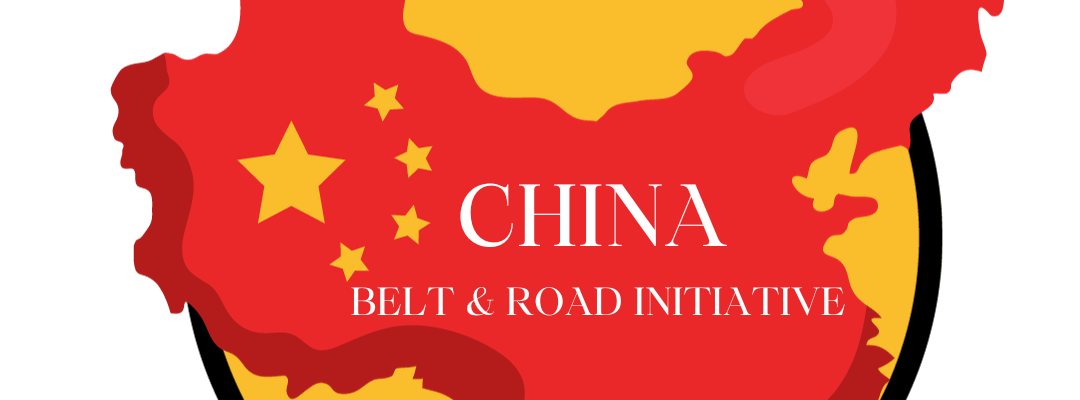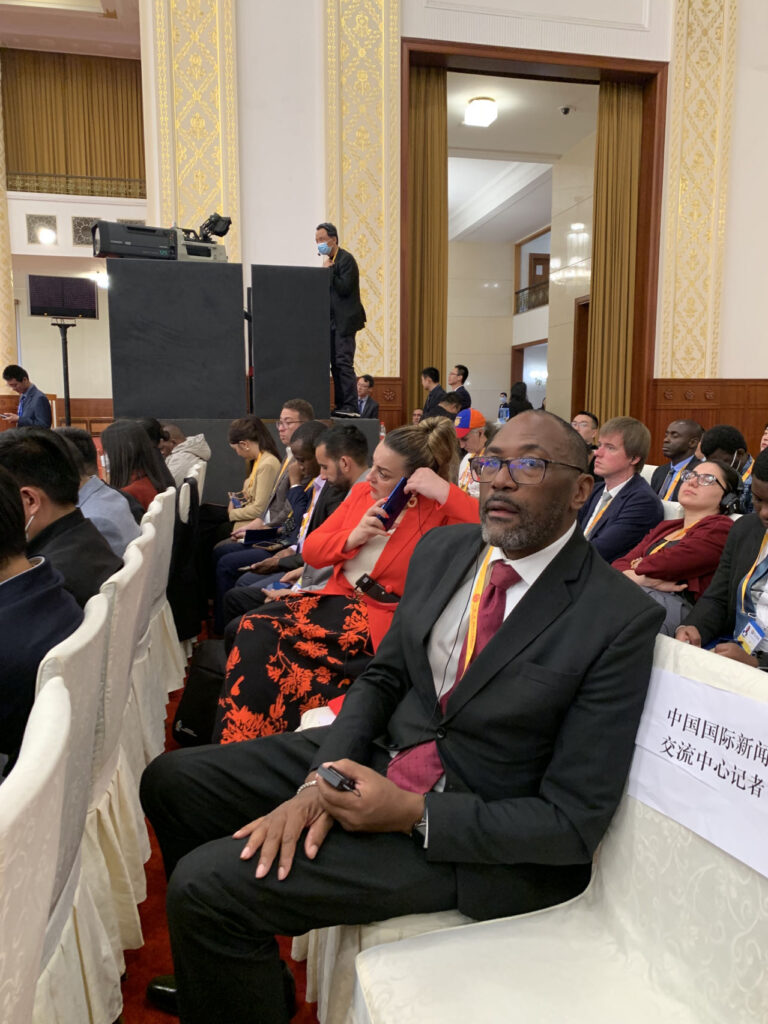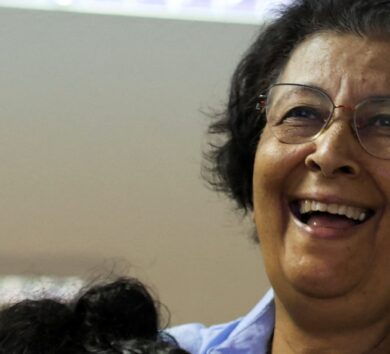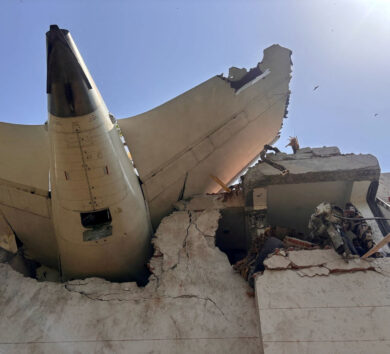

By Al Edwards reporting from Beijing
Today, we are meeting at the Great Hall of the People in Beijing for the opening ceremony of the Third
Belt and Road Forum for International Cooperation (BRF).
This year marks the 10th anniversary of the Belt and Road Initiative President Xi Jinping of China
proposed. The BRI, drawing inspiration from the ancient Silk Road and focusing on enhancing
connectivity, aims to enhance policy, infrastructure, trade, financial and people-to-people connectivity,
inject new impetus into the global economy, create new opportunities for global development, and
build a new platform for international economic cooperation.
Belt and Road cooperation has extended from the Eurasian continent to Africa and Latin America. More
than 150 countries and over 30 international organizations have signed Belt and Road cooperation
documents.
It has progressed from “sketching the outline’ to filling in the details and blueprints have been turned
into real projects. A large number of signature projects and “small yet smart’ people-centred programs
have been launched.
Belt and Road has expanded from physical connectivity to institutional connectivity. Important guiding
principles for high-quality Belt and Road cooperation have been laid down, which include the principle
of “planning together,” the philosophy of open green and clean cooperation and the goal of pursuing
high-standard, people centred and sustainable cooperation.
Over these 10 years, China and its partners have endeavoured to build a global network of connectivity
consisting corridors, international transportation routes and information highways as well as railways,
roads, airports, ports, pipelines and power grids. Covering the land, the ocean, the sky and the Internet,
this network has boosted the flow of goods, capital, technologies and human resources among countries
involved and injected fresh vitality into the millennia-old Silk Road in the new era.
Trains speeding along rail tracks, automobiles running on roads,, flights connecting different countries,
cargo ships breaking waves and e-commerce bringing so much convenience to people-they have all
become symbols of international trade in the new era, just like the camel caravans and the sailing ships
were for the past age.
Hydro, wind and solar energy-based powerplants, oil and gas pipelines, and the increasingly smart and
interconnected power transmission networks are removing the development bottlenecks caused by
energy shortage and fulfilling the dream of developing countries to achieve green and low-carbon
development. These energy projects have become the oasis and lighthouse for sustainable development
in the new era.
President Xi explained the intent behind BRI as “planning together, building together and benefiting
together.” It transcends differences between civilizations, cultures, social systems, and stages of
development.
“It has opened a new path for exchanges among countries and established a new framework for
international cooperation. Indeed the BRI represents humanity’s joint pursuit of development for all.
Turning his attention to China’s role here, he stressed the world’s fortunes are inextricably linked to
China’s fortunes. One cannot exist without the other.

“We have learned that humankind is a community with a shared future. China can only do well when
the world is doing well. When China does well, the world will get even better. Through Belt and Road
cooperation, China is opening its door even wider to the world, with its inland regions turning from
“fullbacks” into “forwards”.
“China’s market has become even more closely integrated with the global market. China has become a
main trading partner of more than 140 countries and territories and a primary source of investment for
more countries. Both Chinese investment overseas and foreign investment in China have boosted
friendship, cooperation, confidence and hope.”
During his presentation at the Great Hall, President Xi Jinping announced eight major steps China will
take to support a joint pursuit of BRI cooperation.
FIRST – Building a multidimensional Belt and Road Connectivity Network
China will speed up high-quality development of the China Europe Express, participate in the trans-
Caspian international transportation corridor, host the China-Europe Railway Express Cooperation
Forum and make joint efforts to build a new logistics corridor across the Eurasian continent linked by direct railway and road transportation.. China will integrate ports, shipping and trading services under
the “Silk Road Maritime,” and accelerate the building of the New International Land-Sea Trade Corridor
and the Air Silk Road.
SECOND- Supporting an open world economy
China will establish pilot zones for Silk Road e-commerce cooperation, enter into free trade agreements
and investment protection treaties with more countries. We will remove all restrictions on foreign
investment access in the manufacturing sector. China will hold the Global Digital Trade Expo annually in
the next five years. China’s total trade in goods and services is expected to exceed US$32 trillion and
US$5 trillion respectively.
THIRD – Carrying Out Practical Cooperation
China will promote both signature projects and “small yet smart” livelihood programmes. The China
Development Bank and the Export-Import Bank of China will each set up a RMB350 billon financing
window. An additional RMB80 billion will be injected into the Silk Road Fund. Together, they will
support BRI projects on the basis market and business operations. Cooperation agreements worth
US$97.2 billion have ben concluded at the CEO Forum held during this forum.
FOURTH – Promoting Green Development
China will continue to deepen cooperation in areas such as green infrastructure, green energy and green
transportation and step up support for the BRI International Green Development Coalition. China will
implement the Green Investment Principles for the Belt and Road and provide 100,000 training
opportunities for partner countries by 2030.
FIFTH- Advancing scientific and Technological Innovation
China will continue the Belt and Road Science, Technology and Innovation Cooperation Action Plan, hold
the first Belt and Road Conference on Science and Technology Exchange, increase the number of joint
laboratories built with other parties to 100 in the next five years and support young scientists from
other countries to work on short term programs in China.
At this forum, China will put forward the Global Initiative for Artificial Intelligence (AI) Governance. We
stand ready to increase exchanges and dialogue with other countries and jointly promote the sound,
orderly and secure AI development in the world.
SIXTH – Supporting People-to-People Exchanges
China will host the Liangzhu Forum to enhance dialogue on civilizations with BRI partner countries. In
addition to the Silk Road International League of Theatres, the Silk Road International Arts Festival, the
International Alliance of Museums of the Silk Road, the Silk Road International Alliance of Art Museums,
and the Silk Road International Library Alliance that have been set up, China has also launched the
International Tourism Alliance of Silk Road Cities.
SEVENTH – Promoting Integrity-based Belt and Road Cooperation
Together with its cooperation partners, China will release the Achievements and Prospects of Belt and
Road Integrity Building and the High -Level Principles on Belt and Road Integrity Building and establish
the Integrity the Integrity and Compliance Evaluation System for Companies Involved in Belt and Road
Cooperation.. We will also work with international organisations to carry out research and training on
promoting integrity in Belt and Road cooperation.
EIGHTH- Strengthening Institutional Building for International Belt and Road Cooperation.
China will work with its BRI partner countries to strengthen the building of multilateral cooperation
platforms covering energy, taxation, finance, green development, disaster reduction, anti-corruption,
think-tank, media, culture and other fields. China will continue to host the BRF and establish a
secretariat for the Forum.

Why is the BRI important for the world?
President Xi Jinping said : “What has been achieved in the past 10 years demonstrates that Belt and
Road cooperation is on the right side of history. It represents the advancing of our times, and it is the
right path forward. We need to remain clear-eyed and undisturbed in a volatile world and we need to be
keenly aware of our responsibility for history, for the people and for the world. We should jointly
address various global risks and challenges, and deliver a bright future of peace, development,
cooperation, and mutual benefit for future generations.
“The modernisation we are pursuing is not for China alone, but for all developing countries through our
joint efforts. I once said that the pioneers of the ancient silk routes won their place in history not as
conquerors. With warships, guns, horses, or swords. Rather they are remembered as friendly emissaries
leading camel caravans and sailing ships loaded with goods.
“Belt and Road cooperation is based on the belief that flame runs high when everyone adds wood to the
fire and that mutual support can get us far. Such cooperation seeks to deliver a good life not only to
people of just one country, but to people in other countries as well.”







Comments